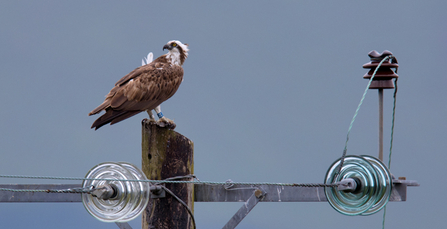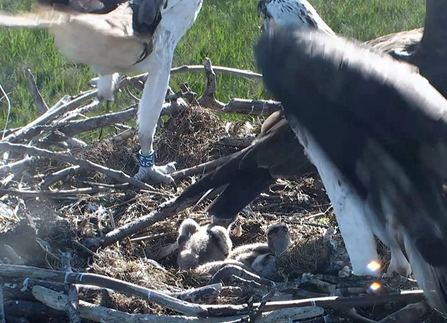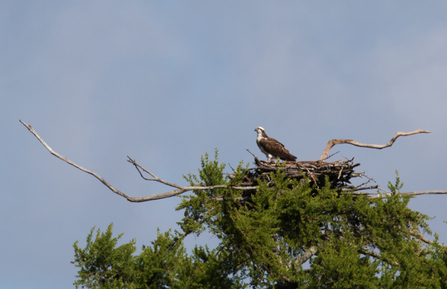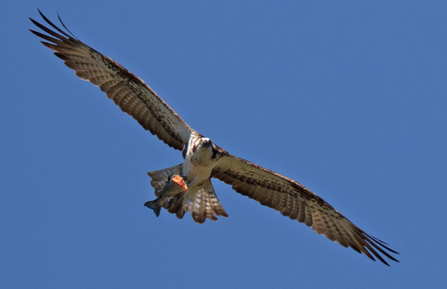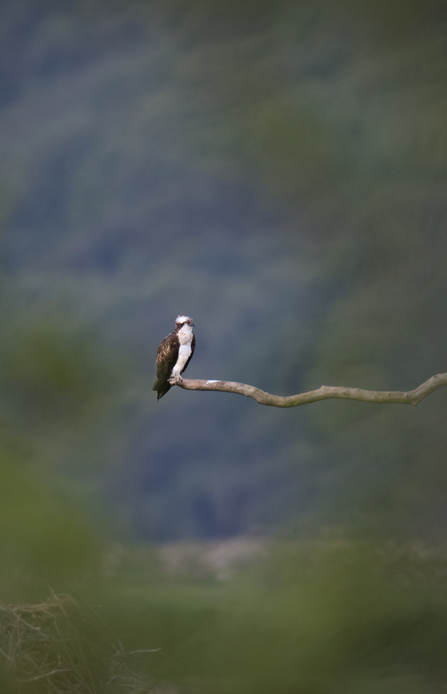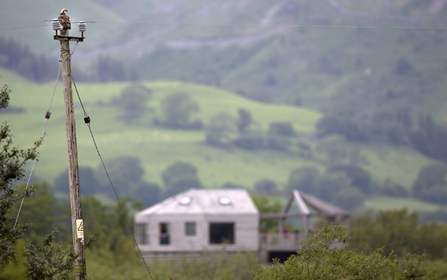Blue 24 is still with us today - Saturday, 29th August 2015.
This year she arrived on the Dyfi at 07:29 on 7th April - Monty arrived just a few hours later at 14:19. By that evening they were both mating on the nest.
Two days later Glesni returned and quickly saw Blue 24 off the nest. She retreated to a favourite perch around a mile away and spent much of the following summer months there, or on an electricity pole half way between this perch and the nest.

